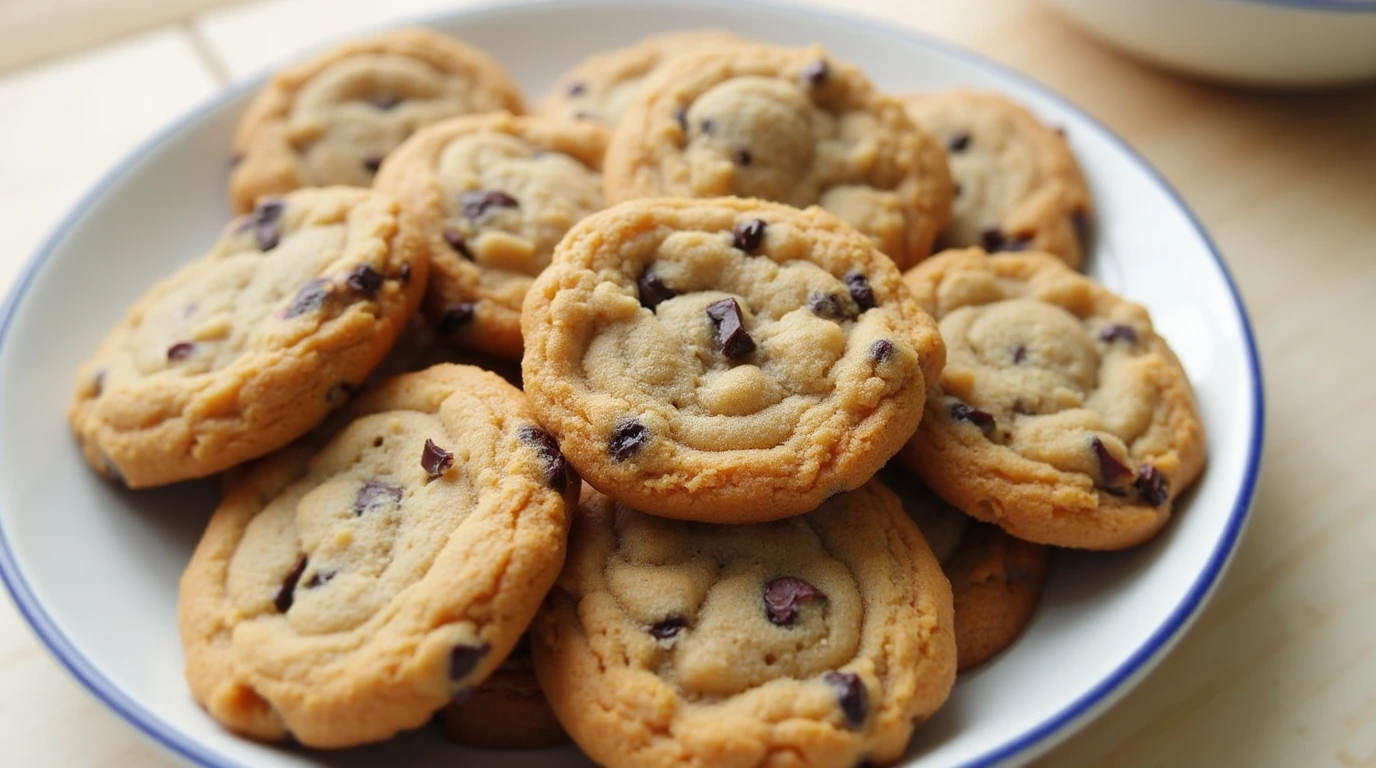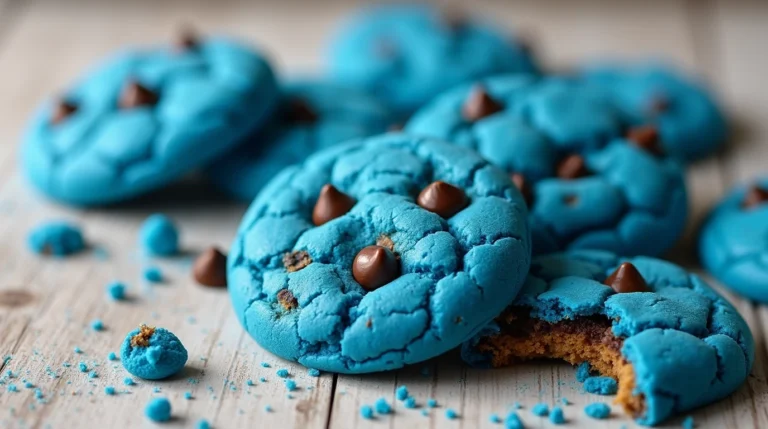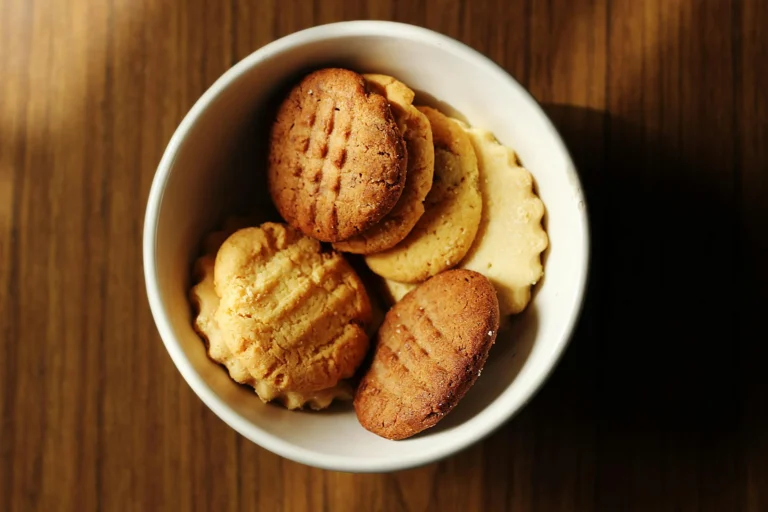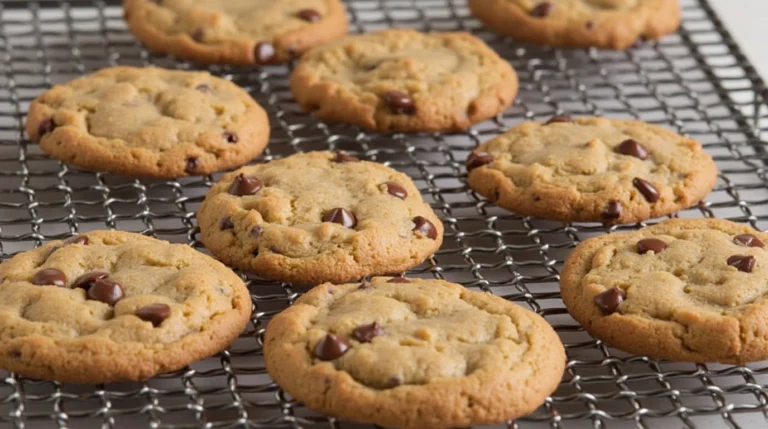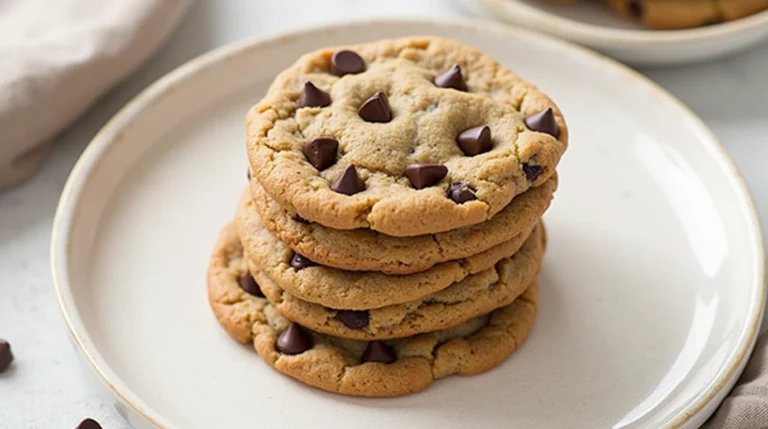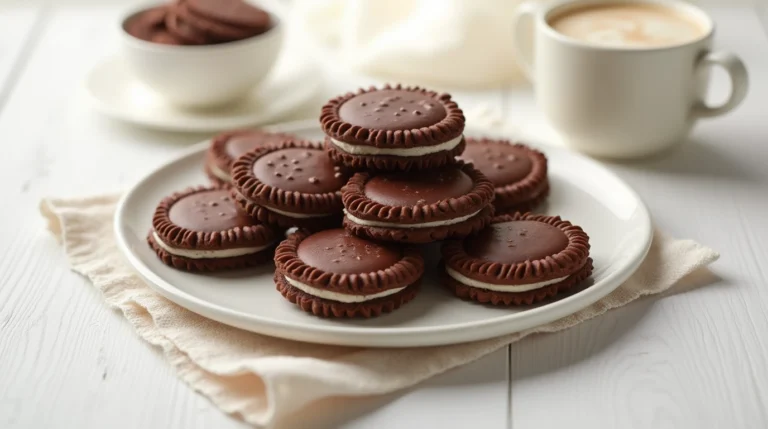Easy & Healthy Low-Calorie Cookies You Can Make at Home
Creating low-calorie cookies that are both delicious and nutritious is an art that combines the right ingredients, techniques, and storage methods. Here’s my detailed guide to help you bake delicious low-calorie cookies without sacrificing flavor! I’ll walk you through the best ingredients, smart substitutions, and easy baking tips so you can enjoy guilt-free treats anytime. Let’s get baking!
Table of Contents
Introduction to Low-Calorie Cookies
- Definition: Low-calorie cookies are treats designed to provide the satisfaction of traditional cookies but with reduced caloric content. This is typically achieved by substituting high-calorie ingredients with lower-calorie alternatives without compromising taste or texture.
- Benefits:
- Weight Management: Incorporating low-calorie cookies into your diet allows for indulgence without significantly impacting daily caloric intake, aiding in weight control.
- Healthier Ingredients: These cookies often utilize whole grains, natural sweeteners, and healthy fats, contributing to overall well-being.
- Dietary Inclusivity: They can be tailored to accommodate various dietary needs, such as gluten-free, vegan, or diabetic-friendly options.
Key Ingredients and Their Roles
- Flour Alternatives:
- Whole Wheat Flour: Offers more fiber and nutrients compared to refined flour, promoting satiety and digestive health.
- Almond Flour: Provides healthy fats, protein, and a moist texture, making it ideal for soft cookies.
- Oat Flour: Adds a chewy texture and is rich in fiber, enhancing the nutritional profile.
- Sweeteners:
- Natural Sweeteners: Ingredients like stevia, monk fruit extract, and erythritol provide sweetness without the added calories of sugar.
- Fruit Purees: Mashed bananas, applesauce, or date paste can naturally sweeten cookies while adding moisture and nutrients.
- Fats:
- Healthy Oils: Coconut oil or avocado oil can replace butter, offering beneficial fatty acids.
- Nut Butters: Almond or peanut butter adds richness and protein, contributing to a satisfying texture.
- Binders:
- Flaxseed Meal: When mixed with water, it forms a gel-like consistency, acting as an egg substitute and adding omega-3 fatty acids.
- Chia Seeds: Similar to flaxseeds, they absorb liquid and help bind ingredients while providing fiber.
Popular Low-Calorie Cookie Recipes
- Chocolate Chip Cookies:
- Description: Soft and chewy cookies studded with dark chocolate chips, offering a classic flavor with reduced calories.
- Recipe Highlight: Utilizing almond flour and a natural sweetener like erythritol can create a cookie with approximately 80 calories per serving.
- Oatmeal Raisin Cookies:
- Description: Chewy cookies combining the wholesomeness of oats with the natural sweetness of raisins.
- Recipe Highlight: Replacing butter with applesauce and using whole grain oats can yield cookies around 90 calories each.
- Peanut Butter Cookies:
- Description: Rich and nutty cookies with a tender crumb, perfect for peanut butter enthusiasts.
- Recipe Highlight: Using powdered peanut butter and a sugar substitute can reduce calories to about 70 per cookie.
- Snickerdoodles:
- Description: Soft cookies coated in cinnamon sugar, offering a warm and comforting flavor.
- Recipe Highlight: Incorporating whole wheat flour and reducing sugar content can result in cookies with approximately 60 calories each.
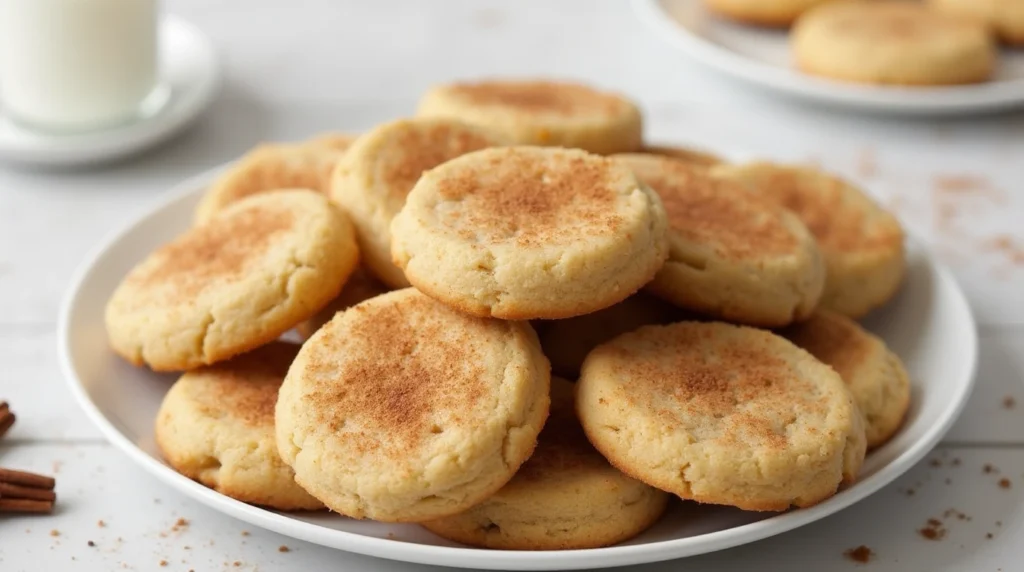
Baking Techniques for Low-Calorie Cookies
- Mixing Methods:
- Creaming: For recipes using fat and sugar substitutes, proper creaming ensures even distribution and aeration, leading to better texture.
- Folding: Gently incorporating dry ingredients prevents overmixing, which can make cookies tough.
- Portion Control:
- Uniformity: Using a cookie scoop ensures consistent sizes, promoting even baking and accurate calorie counts.
- Scaling Recipes: Adjusting batch sizes can help manage portion control and reduce waste.
- Temperature Settings:
- Oven Calibration: Ensuring your oven is at the correct temperature is crucial for achieving the desired cookie texture.
- Baking Time: Monitoring cookies closely prevents overbaking, which can lead to dryness, especially in low-fat recipes.
- Chilling Dough:
- Purpose: Refrigerating dough before baking can control spread and enhance flavor development.
- Duration: Typically, 30 minutes to an hour is sufficient, but some recipes may benefit from overnight chilling.
Storage and Shelf Life
- Airtight Containers:
- Method: Store cookies in sealed containers to maintain freshness and prevent them from becoming stale.
- Layering: Place parchment paper between layers to prevent sticking.
- Refrigeration:
- When Necessary: Cookies containing perishable ingredients like cream cheese or fresh fruit should be refrigerated.
- Impact on Texture: Some cookies may harden in the fridge; bringing them to room temperature before serving can restore softness.
- Freezing:
- Procedure: Place cooled cookies on a baking sheet to freeze individually before transferring to freezer bags.
- Shelf Life: Most cookies can be frozen for up to three months without significant quality loss.
Tips for Enhancing Flavor and Texture
- Spices and Extracts:
- Variety: Incorporate spices like cinnamon, nutmeg, or cardamom, and extracts such as vanilla, almond, or peppermint to add depth of flavor.
- Quality: Using high-quality spices and pure extracts can significantly improve the taste.
- Add-ins:
- Dried Fruits: Incorporate dried fruits like cranberries, raisins, or apricots to add natural sweetness and chewiness.
- Nuts and Seeds: Chopped nuts or seeds can provide a satisfying crunch and enhance the nutritional profile with added protein and healthy fats.
- Dark Chocolate: Using dark chocolate chips or chunks with higher cocoa content can intensify flavor while offering antioxidants.
- Texture Modification:
- Oats: Adding rolled oats can introduce a chewy texture and boost fiber content.
- Coconut Flour: A small amount can absorb moisture and create a denser texture, suitable for certain cookie types.
Nutritional Considerations
- Caloric Content:
- Awareness: Understanding the caloric content of each ingredient helps in formulating cookies that align with dietary goals.
- Portion Size: Designing cookies to be smaller can aid in portion control and reduce calorie intake.
- Macronutrient Balance:
- Proteins: Incorporating protein-rich ingredients like almond flour or adding protein powder can make cookies more satiating.
- Fats: Utilizing healthy fats from sources like nuts or avocados contributes to a balanced macronutrient profile.
- Carbohydrates: Opting for complex carbohydrates, such as whole grain flours, provides sustained energy and fiber.
- Dietary Restrictions:
- Gluten-Free: Using flours like almond, coconut, or certified gluten-free oat flour caters to those with gluten sensitivities.
- Vegan Options: Replacing eggs with flaxseed meal or chia seeds and using plant-based fats accommodates vegan diets.
- Diabetic-Friendly: Employing low-glycemic sweeteners and whole grains helps in managing blood sugar levels.
Conclusion
Crafting low-calorie cookies that are both delicious and nutritious involves thoughtful selection of ingredients, precise baking techniques, and proper storage methods. By exploring various flour alternatives, sweeteners, and fats, one can create cookies that cater to diverse dietary needs without compromising on flavor or texture. Understanding the role of each component and employing appropriate baking practices ensures that these treats not only satisfy sweet cravings but also contribute positively to overall health. Whether for weight management, accommodating dietary restrictions, or simply enjoying a guilt-free indulgence, low-calorie cookies offer a versatile and enjoyable option in the world of baking.
Frequently Asked Questions (FAQ)
1. What defines a low-calorie cookie?
A low-calorie cookie is designed to contain fewer calories than traditional cookies, typically by reducing sugar and fat content or by using alternative ingredients that provide fewer calories while maintaining taste and texture.
2. How can I reduce the fat content in my cookie recipes?
Reducing fat content in cookies can be achieved by substituting traditional fats like butter with alternatives such as applesauce, mashed bananas, or yogurt. However, it’s important to note that fat contributes to the cookie’s texture and flavor, so modifications may alter the final product.
3. What are some common sugar substitutes used in low-calorie cookies?
Common sugar substitutes include natural sweeteners like stevia, monk fruit extract, and sugar alcohols such as erythritol and xylitol. These alternatives provide sweetness with fewer calories and a lower glycemic index.
4. Can I make low-calorie cookies gluten-free?
Yes, by using gluten-free flours such as almond flour, coconut flour, or certified gluten-free oat flour, you can create low-calorie, gluten-free cookies. Ensure that all other ingredients used are also gluten-free to avoid cross-contamination.
5. How does reducing sugar affect the texture of cookies?
Sugar contributes to the spread, texture, and browning of cookies. Reducing sugar may result in cookies that are less tender, paler, and have a different spread. To compensate, adjustments in baking techniques or adding moisture-retaining ingredients may be necessary.
6. Are there any store-bought low-calorie cookies available?
Yes, various brands offer low-calorie cookies. However, it’s essential to read the nutritional labels carefully, as some may contain artificial additives or higher amounts of certain ingredients to compensate for reduced calories.
7. How should I store low-calorie cookies to maintain freshness?
Store low-calorie cookies in airtight containers at room temperature for up to a week. For extended freshness, consider refrigerating or freezing them, depending on the ingredients used.
8. Can I freeze low-calorie cookies?
Yes, many low-calorie cookies freeze well. Place them in a single layer on a baking sheet to freeze individually, then transfer to a freezer-safe container or bag. They can typically be frozen for up to three months.
9. Will reducing butter in cookie recipes affect the final product?
Reducing butter can impact the flavor, texture, and moisture of cookies. Butter contributes to richness and tenderness; thus, reducing it may result in drier and less flavorful cookies. Experimenting with substitutes like applesauce or yogurt can help maintain desired qualities.
10. Are low-calorie cookies suitable for individuals with diabetes?
Low-calorie cookies made with sugar substitutes and whole-grain flours can be suitable for individuals with diabetes. However, it’s crucial to monitor carbohydrate content and consult with a healthcare provider to ensure they fit within dietary guidelines.
Leave a Review
There are no reviews yet. Be the first one to write one.

